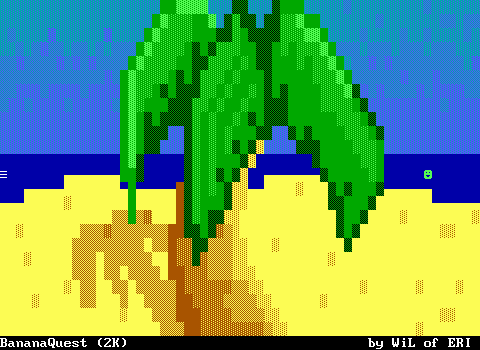For all the patron nominated games on the polls lately, I think XZR: Exile has definitely been the one I've been most curious about, so I was pleased to see it finally win (read: tie). A ZZT action/RPG in the early 2000s doesn't sound all that exciting on paper. These are some of the most commonly found genres on the Museum, making any such games inevitably face an uphill battle to justify why they're the game to go with over so many alternatives.
ZZT RPGs also have the misfortune of the sad reality that few ZZT RPG battle engines hold up today, years after the novelty of such things has long since faded. Not that that has ever stopped me from playing game after game in search of something unique regardless of how well its fights are coded.
XZR though, is considerably different from most ZZT worlds. A game whose quality I was really curious to try and measure. Firstly, the game's author _ry0suke_, usually written as Ry0 or Ryo, has not once managed to be covered either on stream in article form, despite being a well-known member of the ZZT community in the early 2000s. Of course, one look at the list of worlds credited to his name make it extremely obvious why. More than any other author Ryo has the most worlds hosted which have since been flagged as explicit in some way. Sometimes because of the text, sometimes because of pornographic art boards, sometimes a little of both. It's to the point where the Worlds of ZZT bot that posts random screenshots just straight up has a clause to exclude any worlds credited to him because oh so rarely do they seem to make it through the cursory vetting process.
So, this game might seem like it's a potential landmine, and of course that was the first thing I looked into before even putting it up on the polls in the first place. This game successfully avoids all of that, not that it's entirely devoid of content that would make the ESRB quickly slap an "M" on the box and call it a day. Which brings me to the other reason XZR: Exile seemed like it would be cool to explore after I assured myself I wouldn't regret it:
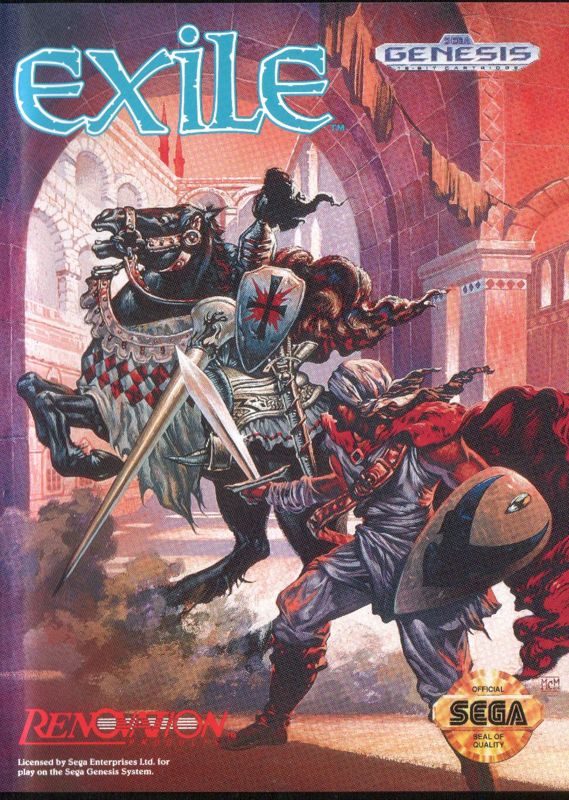
This is a port!
Specifically a port of the Genesis (or Mega Drive for Ryo) release of Exile. A port which itself is a remake of the 1988 XZR II: Kanketsuhen for the NEC PC-88, PC-98, and MSX2 home computers. (Thanks Wikipedia.) ZZT isn't a complete stranger to ports of existing games, but they're quite rare compared to original fan works inspired by said games. (Nadir's Dizzy series being the primary example that isn't a port of an early arcade game like Centipede, Space Invaders, or Pac-Man.)
Even these older computers are capable of significantly more than anything ZZT can do. I had to know, as did the patrons who voted, what the heck is this going to actually be? Could Ryo cut the appropriate corners to keep the spirit of the game in heavily truncated form? Was this going to be a loose retelling of the game's story from memory, or a labor of love in converting text from a ROM? Could Ryo be cool for just one minute to avoid the game joining so many others as being noted as containing explicit content?

Well, I'll at least say that yes, he can be cool for a minute. This is a game that anyone can jump into without immediately regretting it. But oh boy there is still some regret, but the subject matter of Ryo's other releases has thankfully nothing to do with it.
The Cast
Sadler - A former assassin and "man with a free mind". Led revolts against corrupt powers in the previous (non-ZZT) game. Now wants to just quietly exist in a small desert town he's in charge of. When justice needs to be served though, he'll travel around the world in the name of justice.
Rumi - Sadler's friend and perhaps potential love interest. Though this romance hardly kindles in anything depicted here. She is the catalyst of the game's events, telling Sadler about the rumors of a Dunes Cavalry member heading towards the village.
Fakhyle - An old wizard friend of Sadler's whose magical abilities are so strong, he can cast spells without the use of a stone of Kamiri. Sounds brag-worthy to me.
Kindi - A mute companion famed for having the strength of ten. Presumably ten men, but the description included by Ryo provides no unit of measurement. Kindi isn't completely non-verbal, able to speak brief sentences with long pauses and concentrated effort. Ryo likes to play with his dialog a bit, capping it off with some less authentic dialog like "Lolz".
Yuug D'Payne - The commander of the Dunes Cavalry, a branch of the French foreign legion. His desire is to unite the world and end all wars, which he believes can be done by getting everybody to follow one religion. They've been working with the Klispin crusaders only to realize the crusaders are more interesting in killing anyone who disagrees with them.
There are of course plenty more characters that will be met along the way as the story develops. It almost feels a bit unfair to consider these five to be the major players. Players control Sadler for the duration of the game, while the others don't actually do too much.
Despite Sadler traveling with the full party, and later on just with Rumi, these other characters are little more than bit parts. This is even the case in the original game, where the rest of the crew is never visible, leaving Sadler to defeat every enemy himself. This makes the cast a little too forgettable for me, especially in contrast to other recently played worlds like Gem Hunter 3 where the entourage at least made appearances in each of the game's levels, with some text making it seem like they were at least trying to be helpful.
Sega Does What ZZTon't (This is a terrible heading name, sorry.)
Porting an RPG, action or otherwise to ZZT means being very selective about what gets to make the cut. While the source material lets players buy new gear, Ryo's conversion ditches this. Probably since all combat is based around ZZT's moving and shooting (with the added complexity of kills restoring health). You can definitely make weapons that cause enemies to be defeated in fewer hits. Armor is a much more difficult task. It's possible to adjust damage taken with melee hits relying on #take, but if a bullet hits the player, it's minus ten health no matter what you do.
Other items are preserved a bit better. Players do have an actual inventory of restorative items. These are hooked up a to one of those cheat-prompt powered engine typically seen in ZZT's adventure games. Typing ?+TONIC will bring up a list of any such items the player has on them, and let them drink to restore health and magic. At least that's what Ryo claims.
Magic can indeed be purchased, however it isn't a part of the inventory system. Magic in this game is just a generic re-skin of ZZT's bullets where buying a magic restoring item is immediately translated into ammo. There is no cap on it, so there's really no reason to hoard such items even if you could.
With healing items, you can hold on to one of each kind until later. It's a very sparse system however as there are really only two tonics for health available. Other worlds like War-Torn used a counter like torches to represent the player's items more easily. Given the lack of options for these items, this might have a simpler way to do the same thing, without restricting the player's held items. Either way though, the inventory ends up being a rather pointless inclusion more for the sake of having something seen in the source material. Health too is uncapped so there's no particular reason to wait when you purchase or find such items. In some scenarios it's even detrimental to do so.
Oh also the tonics are drugs in this game. No magical potions here. Players get to buy coca, cannabis, peyote, and pika!
I'd like to at this point extend a person apology to Ry0suke, as for the entire duration of my playthrough I assumed this was just ZZTers being ZZTers. To this day I cannot vacuum without thinking about when [REDACTED] on IRC indulged in something and became convinced that Satan was hiding in their vacuum cleaner. It seemed perfectly fitting for a game that stuck to the text except to add "LOLZ" to do such a thing. Yet this too is true to the source material, at the least the uncensored original Japanese release. This article from Hardcore Gaming 101 confirms that drugs are a staple of the game, and in that release the effects wearing off can have detrimental effects on Sadler. Over on the Genesis side, these things get quietly discarded, but by the 2000s Japanese RPGs weren't impossible to find information on.
No doubt Ryo want to preserve the original script as much as possible. And if toking for health also elicited a few laughs from the mostly high school aged ZZT of the time, all the better. Maybe a ZZTer getting really into a late 80s RPG series isn't so surprising after all.
In addition to the dedicated and awkward tonic command which may as well be +420BLAZEIT, Ryo also supports another manually set flag that is simply ?+M. This one is rather original in that it opens up a monster manual specific only to any enemies on the current board. It's actually a rather nifty idea. You can plenty of games such as Bloodlines or Fred! 2 that give players a bestiary to consult. Ryo's way of handling things is a lot nicer though. The example worlds both have dedicated boards from the menu that tell players what they need to know about each enemy. Once the main game is actually started however, it becomes impossible to refer to that information again.
Ryo's per-board method gives players the chance to learn about enemies when they need that information. It also solves the common issue of merely seeing a character and having no clue what it is you're actually fighting, even if handling the foe is no trouble at all. A second advantage it offers is that players aren't necessarily spoiled about enemies up front. Authors get to keep their cards close to their chest here, only revealing exactly the information they want to in a given moment.
These two commands simultaneously show Ryo at his best and his worst. These systems are solid ideas with curious execution, whose drawbacks will be gotten into later. Despite the flaws, it should be apparent to anybody making ZZT games that plays this how such systems could be in other worlds in such a way that improves the experience for players. This game's more unique offerings for ZZT often come off as a rough draft, but the theory is sound and can definitely be studied and learned from.
The Search for the Holimax
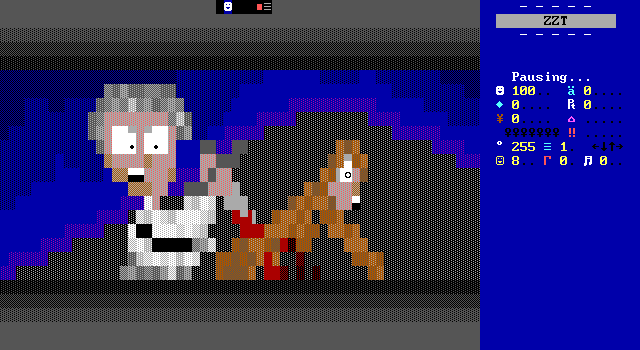
It's a rough world. The era of peace brought about by Sadler's fight against the previous oppressive powers that controlled things is turning out to be rather short lived. The Dunes Cavalry has been working with the Klispin crusaders, burning villages and forcing their religion on others. They've even led attacks against their own allies. Trust is in short supply.
So when rumors surface in Sadler's quiet desert town that a man in Dunes cavalry regalia has been spotted in the desert heading towards them, the people are in a panic.
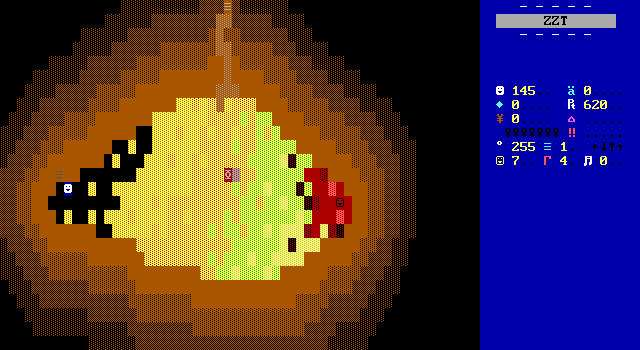
The subject of geopolitics is a complicated one though. The rumors are indeed confirmed, though the man, merely a messenger, perished in the desert to a giant antlion. The message he couldn't deliver himself was addressed to none other than Sadler. The cavalry has come calling, not for war, but for help.
Though his companions urge Sadler not to go, he recognizes that the cavalry was once an honorable people, and that it's only since their uneasy alliance with the Klispins that the trouble with them began. It's a risk he finds himself apprehensively taking. Setting out with his friends he meets with Yuug, the cavalry leader who explains their plight.
The Klispins and cavalry both share a goal of wanting peace (good). Both groups believe this can only truly happen if the world unites as one (yeah sure), under one religion (ummm). Historically speaking, that hasn't gone very well for folks that tried. For the cavalry, their reputation has been tarnished thanks to the Klispins having no qualms burning villages and killing non-believers (oops). Their goal of peace is now one built on top of relentless bloodshed (welp).
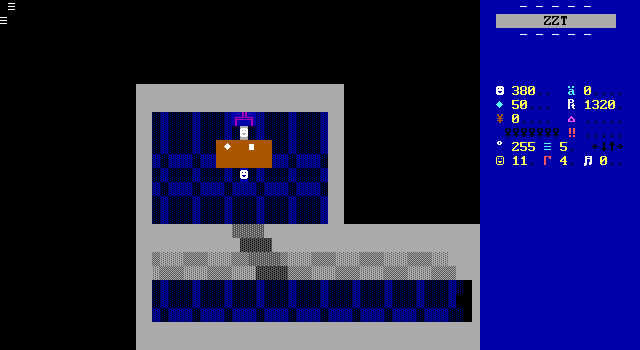
Yuug explains that the only way to put an end to the violence and bring the world under peace is by finding a legendary artifact known as the Holimax. This holy macguffin will allow the world to unite as one without any blood being spilled, ending the fighting, bringing the people together, and putting a stop to the Klispin crusades.
Sadler and Rumi set off on a globe-spanning adventure searching for clues to the artifact and solving the troubles of other kingdoms along the way...
It's a pretty neat setup for a story! Whether by ZZT standards or RPGs of the era. Ryo's infatuation with the game makes perfect sense. The source material creates a rather intriguing world, dealing with far heavier subjects than most games cared to tackle at the time (at least for what I've played). Seeing where the story would take Sadler next was a big part of the game's appeal to me, and easily its most endearing aspect.
The recently covered Walter's Quest also was a game whose story was my prime motivation to seeing things through to the end. The trouble is, that while the rough action of Walter's Quest was able to get by on the good graces of its own story and the action having clear potential, the non-story components of XZR are very uninteresting. Shorter games can get away with uninspiring gameplay by not demanding too much time from their players. Ryo's game has nearly twice the boards and still doesn't manage to tell a complete story with it, and that is this game's undoing.
The Many Trials of Sadler
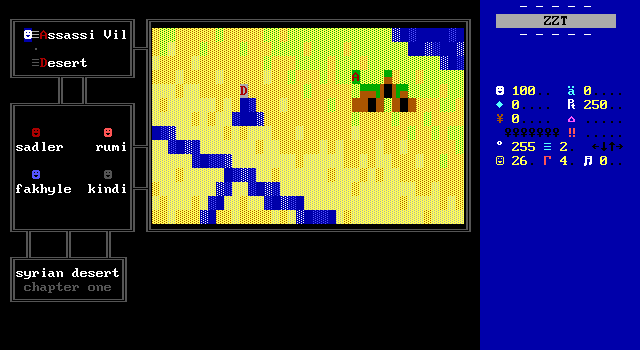
Starting from his own town, the game begins with Sadler learning of the rumors of the cavalryman being seen in the desert, with him running around town trying to find the full story and bring his friends together until the hot sun recedes enough to make it safe to journey through the desert.
I found myself invested fairly quickly. Ryo carries things over faithfully enough that the story ends up being one of the better ones seen in ZZT. Though it starts with the basic premise of "The bad guys are coming", things are quickly pulled in unexpected directions, in contrast to most ZZT worlds that tend to not surprise players so much. You'd expect the party to find this cavalry member, probably fight to the death, and then be pulled into a war with the group. When I instead found that the body behind the antlion boss was none other than the person being searched for, I knew this game was going to to be different.
A letter directly addressed to Sadler found on the deceased has the presumed enemy politely requesting his presence in their town as they require his help. It's certainly suspicious, and the party members repeatedly warn Sadler that he shouldn't go, yet the mystery is too strong. Yuug, the leader of the Dunes Cavalry, reveals the real conflict here, and how Sadler is their best shot at resolving it. The cavalry's alliance with the crusaders is recognized as a mistake, and there's no easy way to distance oneself from the group without becoming a target themselves. Instead Sadler is tasked with finding the Holimax artifact to avoid yet another war.
The rest of the group urges Sadler to once again consider that this may all be a trick, and even Sadler admits he doesn't trust Yuug completely, threatening to kill him if he discovers he's been lying about any of this. There's a sense of underlying tension for the duration of the game as all of this really amounts to Sadler having faith in Yuug, with players waiting for the moment when that faith is proven to have been the right call or dashed by a sudden betrayal.
It's sort of an "Are we the baddies?" without the fascist regalia. Players are constantly waiting for the rug to be pulled out from under them, and the longer it takes for that to happen, the more likely they begin to trust Yuug. As you travel from country to country, helping sheperds, royalty, and religious figures along the way, the lack of any reason not to trust Yuug seems to solidify his trust. This feeling of unease likely hits the characters of the game even harder as in game the time spent traveling is stated as taking weeks or even months.
Yuug gets the ball rolling, and kind of makes Sadler look a bit gullible regardless of whether his stated intentions are true. All Sadler really wants is to keep his village safe, but he sure is quick to accept Yuug's insistence that he sails for a month to France to begin the search for the Holimax. Sadler's presence alone sounds like it plays a significant part in his town not being targeted by the crusaders, who are probably eager to strike once they learn he's going to be out of town for multiple months at least. Whether the cavalry joins them or not doesn't really change the threat.
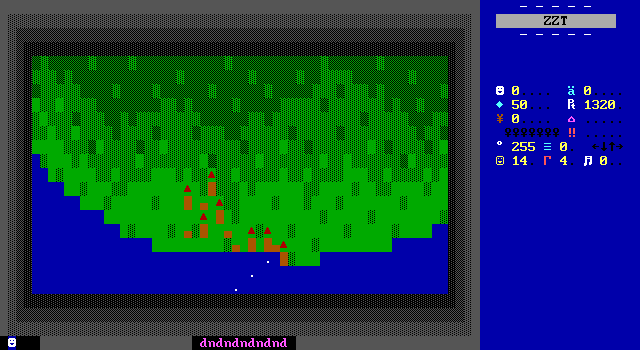
But to France he sails, intending to meet up with members of the Katari sect, another ally of the cavalry that is looking for clues to the Holimax's location.
The party is even split up as well. Yuug is going against the alliance by working with Sadler who has already had to take down a few crusaders just to reach Yuug. Yuug is well aware that his town will likely become a target of the Klispins for it, so he requests that Fakhyle and Kindi stay behind to offer protection, leaving Sadler to travel with only Rumi as a companion.
Adding at least some credibility to Yuug's claims he too travels with the others, so any nefarious plots back home need to have been engineered well in advance.
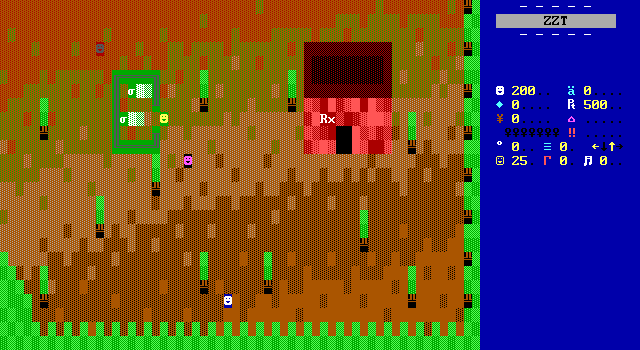
The jump between countries is a nice breaking point for the game to move to a second file, though this logic doesn't follow for the transition to file three. Players arrive in a small town in France which has been successfully converted by the Klispins. Fortunately, these are just everyday folks that don't recognize Sadler and Rumi or see them as enemies.
Which is good because the nearby town of Albee did make enemies of the Klispins and it was burned to the ground in order to cleanse the world of its evil people.
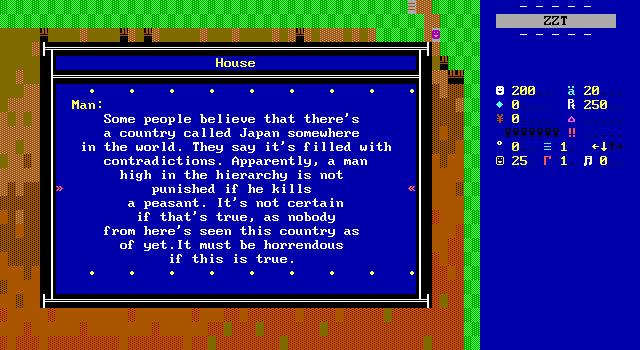
Both the original and Ryo's version of XZR simplify the process of going into homes and talking with people. Rather than bother with any interior scenes which on older hardware would need their own tile-set, merely touching the door is enough to speak with the occupants and provide all the expected RPG text about simple farmers or being afraid of the Klispins. Pictured above, we get a weird guy's take on Japan that is once again lifted wholesale from the Genesis game.
The use of real countries like Japan and France make it difficult to pin down exactly what kind of world this is. It's Earth, with recognizable nations, but the existence of a place such as Japan is disputed. The game is supposed to take place during the crusades, which makes sense what with all the crusaders. It's just a little hard to match the game's story to actual history since the names are frequently made up.
Instead, I kept thinking it was meant to be either a post-apocalyptic world in the far future where there's been a dramatic reduction in technology or just an alternate timeline of actual human history. In either case, Japan being a mystery combined with the story discussing how the world was at peace until recently made it difficult to see the game as our very own reality.
This carries over from the original as well. It's a world with both magic spells and the French foreign legion. However, it is a case where the localization comes into play where the names of other countries are tweaked to rough sound-alikes. Ryo's version, made from a mix of the censored Genesis edition and knowledge of the original text's contents, splits the difference.
Hence the "Klispins" who are in fact the Christians. These changes are found in a lot of character names as well, though most of them are names westerners like myself are unfamiliar with, so it's easy to not even realize that many things in this game are weird videogame interpretations of actual historical figures.
In the small town, the group wants to continue traveling to the burned village, but an old man in true Pokémon fashion is blocking the path, warning everyone not to head to that town after what's happened to it. Not wanting to be as bad as the crusaders and beat up an old man, the group opts to find an alternate route, but things quickly go awry.
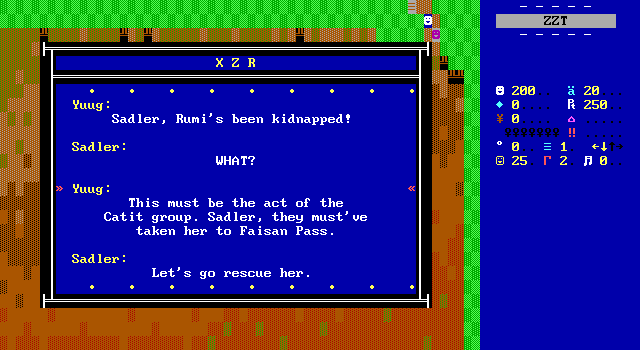
Upon taking your very first steps forward, Rumi cries out Sadler's name and then vanishes, having been kidnapped by the ghosts of Catit. Another villager explains that they're the remnant of a long-dead sect that attack passerby with their magic, warning the party not to go onward. Neither Sadler nor Yuug give a moment's hesitation before going after her.
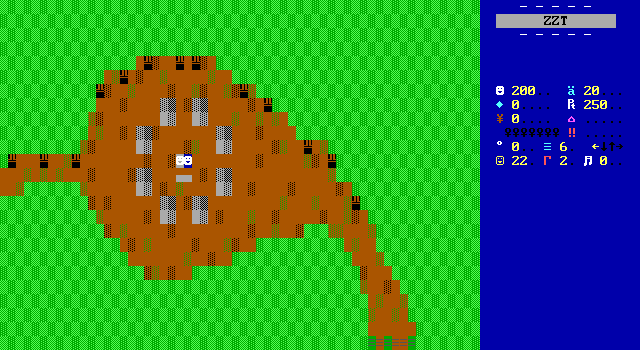
It doesn't take long before the remaining pair themselves split up. After finding themselves in a Stonehenge like environment, Yuug recognizes the importance of such a place and begins to search for its secrets. Perhaps it's a ploy by Yuug to abandon the search for Rumi. Equally likely, a ploy by developer Telenet to explain why once again Sadler is alone in the next dungeon.
Up ahead lies an abandoned Catit cathedral which Sadler must venture into in search of Rumi. Compared to earlier oasis and entrance to Yuug's city this one is rather short, a mere two boards long. Ryo manages to really make the most of two boards, sectioning them off, requiring players to travel through doors and up and down ladders to actually reach everything. It ends up feeling surprisingly disorienting as the passage logic doesn't always map perfectly to the cathedral's architecture. Going into a passage on one floor may have you coming out the other side on a different floor entirely.
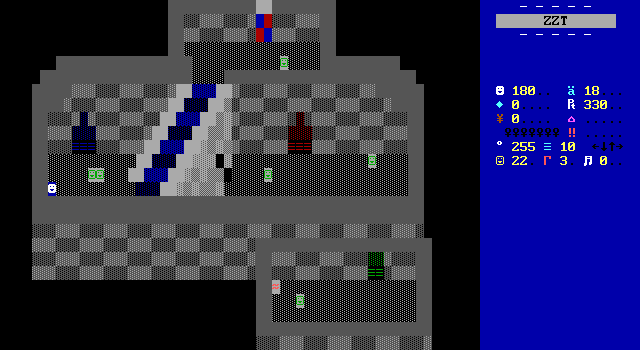
This area has a sprinkling of ghost to fight as Sadler explores, but the game's combat is flat enough that there's really nothing to report here that can't be said about earlier combat. Sadler has magic now so attacking from a distance is the superior strategy, but things don't feel significantly easier or harder to compensate for your new powers.
Again defying expectations, the search for Rumi isn't over when players reach the end of the cathedral. The amulet she wears is discovered, but here whereabouts remain unknown. Sadler is forced to turn back and hope Yuug's investigation has revealed any clues.
Yuug has uncovered the secret of the stones. Something will happen if sunlight is reflected onto them in a certain way. Rumi's amulet doesn't suffice though. Instead a silly side-quest to find a lost sheep ends up being mission critical. That sheep is chewing on a glistening stone and won't give it up for anything.
This leads to a tedious walk back to town to tell the shepherd you've found his sheep, and then to lead him back to the cathedral's outskirts. Again, accurate to the game, but tiring to do. I'd have appreciated just telling the shepherd and having him get the sheep back himself.
As a way of saying thanks though, he lets Sadler keep the stone, now called a "reflector". Guess what it does???
...It shatters some glass in the cathedral allowing access to a new room. Thanks video games.
Sadler:
Catit Priest:
Sadler:
Catit Priest:
Catit Priest:
Sadler:
Catit Priest:
• • • • • • • • •
The Holimax is the motivation for Sadler's journey, and that doesn't really change at all during the events of the game. When a ghost tells Sadler he's been waiting for him, and that he's supposed to "complete the construction of space", things get a little more interesting. At least, momentarily. Sadler rejects the premise immediately rather than asking any questions, which may be the smart thing to do when a murderous ghost that kidnapped your friend/love interest claims to know your destiny.
The boss battles however, are complete flops. None of them do anything particularly interesting, and all are extremely vulnerable to bullet spam once players have access to magic. It's incredibly easy to overkill bosses, triggering victory messages multiple times in a row.
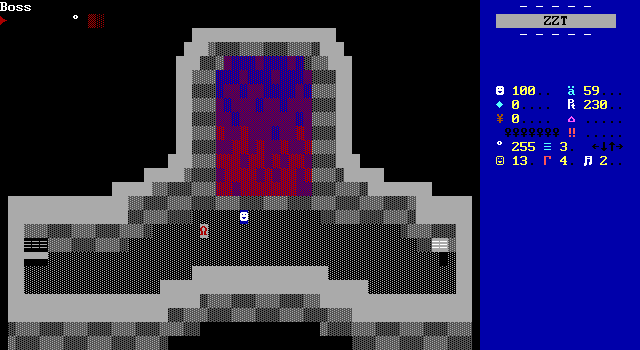
After defeating the ghost, Rumi can be found lying in a bed in a backroom. She reveals she had strange dreams while captive. Dreams of a peaceful world without war, where food was abundant, and everyone was happy ...but she could tell something was wrong with it. Greater plot be damned, no more is spoken of any possible meaning to be found, with the party regrouping and able to head to the town of Albee as they wanted to in the first place.
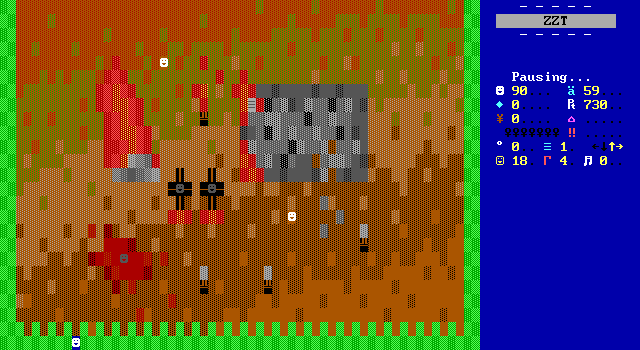
The town has been destroyed, with a few of the crusaders threatening to kill non-believers like the party if they don't beat it. Ryo does a nice job capturing the essentials from the original game, namely those tied to crosses and then burned alive. Nobody is surprised by any of this, well warned in advance what fate befell the town, and how the crusaders really act.
The one building still standing can be entered where the survivors tell Sadler to tell Yuug that all those sent to Caira never returned. Both Sadler and myself didn't understand what that meant, but the old man believes Yuug will understand its meaning.
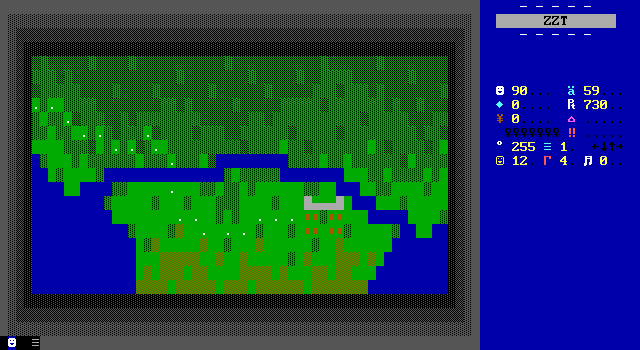
Yuug explains that Caira is a country where it is said that a man named Mani once had the Holimax, and became so powerful that he can be resurrected from the dead for a brief period. So the search for the artifact turns into a quest to find Mani's remains and revive them in order to learn his secrets. It's a long shot, but it's all they have left.

